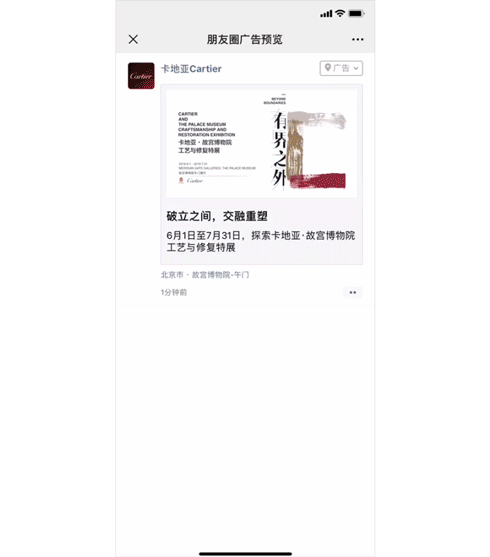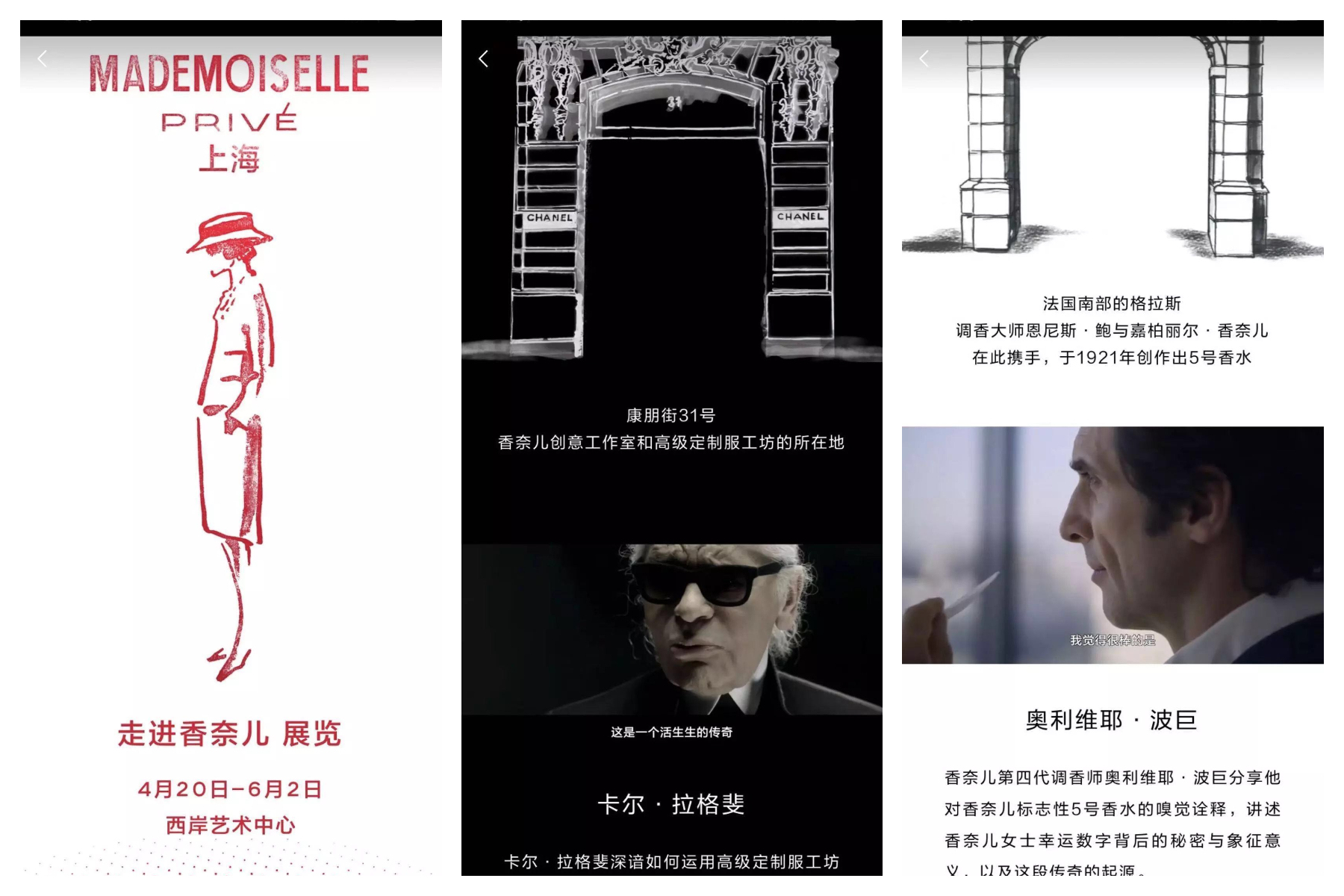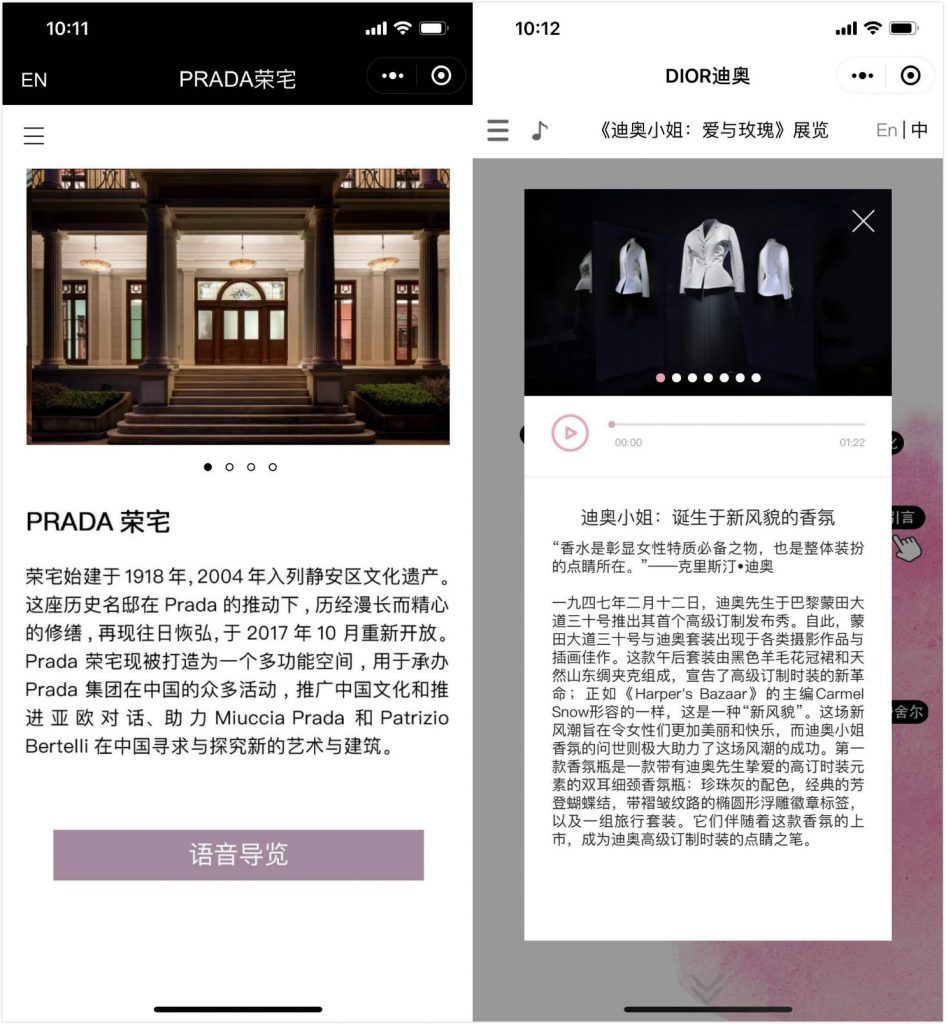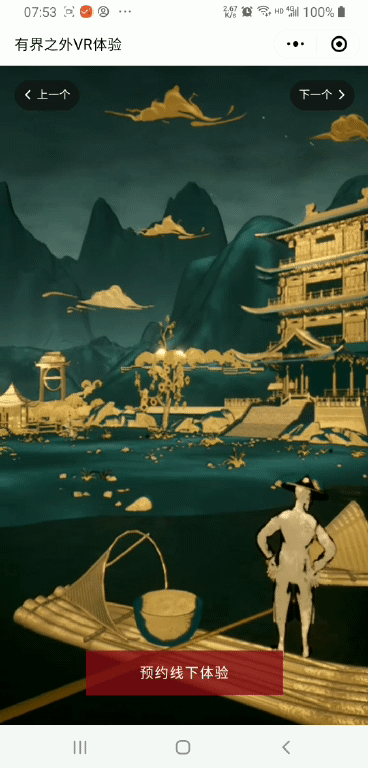INSIGHTяН A GUIDE TO LUXURY BRAND EXHIBITION ONLINE MARKETING
August 15,2019
Note: An in-depth interpretation of the "brand exhibition online marketing operations manual".
According to data collected by Luxe.Co, at least 12 exhibitions of 8 luxury brands have landed in China since 2019. Exhibitions by luxury brands are not new, since the act of holding an exhibition embodies the fact that the brand attaches great importance to a particular market. In China, the competition goes beyond the exhibition itself -- it is an opportunity to showcase brandsт strategies via digital marketing.
FromТ REACHТ toТ AWAKENТ toТ INTERACTIONТ toТ DIFFERENTIATION... how does a brand build a larger funnel?
The purpose of this paper is to explain and deconstruct the online communication exhibition strategies of luxury brands such as Cartier, Bvlgari, Chanel, Prada, Hermes, Dior and Louis Vuitton, and reveal the practical experience of creating an "online funnel" for these brands' exhibitions.
Step 1: Reach
Physical retail: pay attention to the scene, generate an immersive experience
Online marketing: pay attention to every clickТ
A number of brandsт exhibitions are examined in this paper, all of which fully interact with a large number of online users through the WeChat Mini Program, WeChat Moments advertising, and other digital methods. One of the major characteristics of their success is how they deconstruct the inherent expression, language and visual system of luxury brands, and rethink and redesign the communication pathway. For example, we even observed customized emoji by luxury brands. Formulating online communication strategies signifies that the brand is re-exploring brand culture based on a new logic, and establishing a direct dialogue with users via new technologies and a native ecosystem.
1. Going deep into the social ecosystem to discover more users
If a brandтs exhibition is as quiet and low-key as its stores, and only attracts a very limited group of people (who already know the brand), there is no doubt that this was not its original intention when it spent an enormous amount of money on a public exhibition.
Online marketing is becoming a mechanism for luxury brands to "break the circle" and convey their brand culture to users by focusing on telling users who they are, and connecting with those who don't know them yet. This is why brands need to start from usersт perspective, and win their hearts step-by-step.
Cartier is a good case to study. During its two-month exhibition entitled "Beyond Boundaries: Cartier and the Palace Museum Craftsmanship and Restoration Exhibitionт (hereinafter referred to as "Beyond Boundariesт), Cartier released two waves of advertisements through WeChat Moments, which enabled the exhibition to penetrate the social ecosystem of WeChat Moments, and more accurately reach more groups of potential interest.
It is worth mentioning that both waves of advertising used the POI (Point Of Interest) functionality in WeChat Moments to make emphasise the exhibition address. Users in Beijing and other places were able to see the location of the exhibition, "Beijing тЂ Palace Museum - Meridian Gate", which created a sense of "immersion" for them.

2. Digitising exhibitions, conveying the brand culture
The WeChat Moment will lead users to Cartier's WeChat Mini Program, which is especially created for the exhibition, in order to give them a deeper, three-dimensional understanding so that they truly experience the exhibition. The richness of the content is clear simply by browsing the directory of the app.
When using the WeChat Mini Program became the standard of brand exhibitions, Cartier created a "walking exhibition app". This meant that, even if users did not know Cartier or had no opportunity to see the exhibition in person, they were able to experience something similar from the WeChat Mini Program. Now, more than ever, Chinese consumers are hungry to know the story behind the brand. Hence, they need more convincing interactions beyond simply consuming the brand, and even a sense of belonging.
Cartierтs WeChat Mini Program, "Beyond Boundaries" contains detailed catalogues, in which the layout of each of the three exhibition halls and areas are reproduced by hand drawing and users are able to switch between each exhibition hall by sliding from left to right. More than 800 art pieces were presented in the offline exhibition, some of which were selected from the online Mini Program. The artistic elements and cultural connotations behind the exhibits were also presented to users in the form of pictures and text, with much information detailing the historical background, material, size and image of the exhibits. It is obvious that the Mini Program has become an important medium for the "digitalization" of luxury brandsт exhibitions.
Step 2: Activate/Awaken
1. Multiple reminders
Chanelтs тMademoiselle PrivУЉт Shanghai exhibition has often been highlighted on the list of "can't miss luxury brand exhibitions" in the past 6 months. Looking back, Chanel did plenty of online marketing to warm-up the exhibition and promote it, both before and after it went live. Chanelтs exhibition lasted 44 days according to the official data and the brand launched 4 waves of advertising on WeChat Moment in just one month to promote the exhibition. In terms of timing and content, Chanel started the first and second waves of advertising 10 days before the official launch, and the third and fourth waves in parallel with the exhibition.
Videos of celebrity interviews were embedded in the first wave of advertising, in which the theme of the exhibition was introduced from the perspective of the celebrity, and users were guided to make an appointment to see the exhibition.

In the last two ads, these celebrity interviews were replaced with interviews with the Creative Director, Karl Lagerfeld, fourth generation perfumer Olivier Polge, and the director of the fine jewelry studio, Patrice Leguereau. Together, they shared the creative sources of Chanel's three major businesses: ready-to-wear, perfume, and jewelry. Т There is no doubt that repeated advertising can enhance the presence of brands in social ecology and enhance their social popularity.
Another point worth learning is that Chanel adopted a progressive content presentation, which enhanced WeChat usersт interaction with the exhibition, and avoided fatigue from repeated contents, thereby maximizing the effectiveness of the campaign.
2. Grasping the emotions of local consumers
Faced with a larger and more complex user base, brands are being challenged by online communication to really understand local consumers' emotions and preferences. The three mini interactive games launched by Cartierтs "Beyond Boundaries" app gives users multiple roles, such as "cultural puzzle solver", which closely follows the upsurge of Chinese people's attention to the restoration of cultural relics and Chinese culture in recent years.

Besides utilizing the "China element", luxury brands also use the "celebrity effect" to extend the interaction between celebrity spokespeople and users from offline to online. For instance, Chanel embeds celebrity interview videos into WeChat Moments, and Bvlgariтs "SerpentiForm" exhibitionsт Mini Program uses brand spokesmen for the voice of their audio guide.
Step 3: Interaction
Interactive marketing comparable to websites/apps
When opening each brandтs WeChat Mini Program, we were surprised by the variety of functions and huge amount of information, as well as the interface and interactive design compared to a normal website or app. Т Each brand takes the opportunity of an exhibition to do all it can to reach more users by means of WeChat, which has an enormous user base of 1.112 billion monthly live users. Therefore, WeChat Moment advertising and design of Mini Program brand exhibitions became the most worthy of our in-depth study. We found three prominent features:
1. Audio-visual immersive experience
Voice tours have become an indispensable part of all brand exhibition Mini Programs, and luxury brands have gone beyond mere voice tours to try more diverse formats. For example, the Mini Program of Prada's "What Was I?" exhibition mainly contained the function of voice guidance whereby a picture represented an exhibition hall, and users were able to switch to the exhibition hall and voice at the same time by sliding the picture from left to right. Diorтs "Miss Diorтs Love 'n Roses Exhibition"Т WeChat MiniТ Program contained a map of the exhibition area, where users were able to click the corresponding exhibition area and a voice introduction would pop up (including pictures and text).

In addition, the immersive experience has extended from offline to online. The Mini Program of Cartier "Beyond Boundaries" introduced a "VR immersive experience" in line with the offline exhibition, and provided VR scene exploration with three themes.

2. Gamification
Improving usersт engagement through gamification interaction has always been one of the core topics in luxury brand online marketing. The main features of online interactive games created by luxury brands of "Not too long and not too complicated", often attract users to click and play. For example, a WeChat Mini Program created by Hermes allows users to rotate the turntable to choose a tool for making silk or leather products, and in Bvlgariтs Mini Program, users need to visit the exhibition site to find 7 QR codes to unlock the "SerpentiForm".

3. EMV general mass communication
Luxury brands have inserted a personalized experience with strong social features into the exhibition Mini Programs, catering to young people's habit of taking photos and sharing them, including photo frame stickers, photo walls, emoji, dynamic stickers, and so on, combined with exhibition themes, to bring more people to the exhibition.
DiorтsТ "Miss Diorтs Love 'n Roses Exhibitionт MiniТ Program provided a customized photo service, and enabled users to upload photos, add stickers, and post their photos "on the wall". Cartierтs Mini Program "Clash DE Cartier exhibition" also provided theme photos to be produced online. Visitors to the exhibition only need to scan the code to see their photo on the screen wall.

In addition to offering notebooks, canvas bags and other souvenirs at offline exhibitions, luxury brands have also begun to offer fun merchandise online. For example, Louis Vuitton's тTime Capsuleт WeChat exhibition guides users to the official account to receive emoji stickers, and Cartier's Mini Program "Beyond Boundaries" produces emoji with dragons, phoenix, turtles, cranes, koi and other traditional auspicious animals.

Step 4:Т Differentiation
The reason for users to enter the physical store? One is enough!
What is the ultimate purpose of an online brand exhibition? How does a brand convince and transform online users? We observed the final diversion from WeChat Moment ads and Mini Programs and found that it was divided into 4 different paths, which are respectively:
- Making an appointment to visit the exhibition
- Guide to the brand's WeChat public account
- Guide to the official website of the brand
- Guide to offline stores
1. Making an appointment to visit the exhibition
This is the most direct path, and it is also the basic purpose of an online marketing campaign. Cartier and Bvlgari have adopted the path of "ads -- WeChat Mini Program -- exhibition reservation" in the WeChat moments ads for exhibitions, which are a direct channel for offline exhibitions. Most luxury brands offer access to multiple exhibitions, but there are exceptions specific to some exhibitions. For example, users can only make an appointment for Chanelтs Interactive workshop experience course through the MiniТ Program.
2. Guide to the brand's official public account
Many luxury brands did not direct the flow of the WeChat Moments ads to offline exhibitions, but instead adopted the path of "ads -- brandтs WeChat public account -- reservation", by taking the opportunity of the exhibition to gather usersт data and direct them to the brandтs public account. For example, Chanel's "Mademoiselle PrivУЉ" exhibition and Louis Vuitton's тTime Capsuleт exhibition put ads in the WeChat Moments, all of which led users to pay attention to the WeChat public account; Bvlgariтs "SerpentiForm" exhibition ads in WeChat Moments simply set up a dual entrance whereby users were able to choose to enter the exhibitionтs Mini Program or the home page of the brandтs WeChat public account.
3. Guide to the official website of the brand
During the tour exhibition of Hermesт "petit h" series, ads placed in the WeChat Moments not only led to the official WeChat public account, but also to the official brand website. After clicking, users would directly jump to the product interface of "petit h". They were also able to place orders directly on the official website if they intended to buy. Hermes launched its new official website in China last October with the addition of an online shopping function. This meant that the brand had officially launched its e-commerce business in China. WeChat Moment ads were able to guide users to the official website, which had been launched quite recently.
4. Guide to offline stores
Offline stores have become the inevitable home of online users. Luxury brands also seize all opportunities, through Mini Programs or other carriers, to continue to create opportunities for users to shop. Their presence in the store brings more possibilities for the brand based on customer flow and its sales strategy. Cartier created a visually rich online VR experience with the "Beyond Boundaries" exhibition. Users were able to visit Cartier stores in Beijing and Shanghai via the VR experience based on a Mini Program. This may have been the "best way" for those who were not actually able to see the exhibition.
Conclusion
When preparing the Mini Program for the "Beyond Boundaries" exhibition, Cartier once described the exhibition as a journey of cultural exchange with the audience. Since it is easy to communicate with the younger generation using WeChat, the usage of WeChat Moments promotions and Mini Programs is increasingly important.
As the owned channel for luxury brands, WeChat Mini Programs can be easily adjusted to accommodate brandsт specific strategies. The technological inclusiveness of Mini Programs not only provides brands with a diversified presentation space for the dissemination of content, but also a complete service that integrates all functions.
Furthermore, as part of the WeChat ecosystem, while "connecting users" has always been the core ability of Mini Programs, тlight opening and light sharing" has provided a greater imaginative space for luxury brands that causes a "perfect storm" for an exhibition.













х